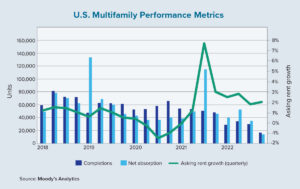Commercial real estate deals face special problems when a seller has a loan locked into a commercial mortgage-backed security (CMBS). The seller often can’t find a viable way to get out of the loan early in order for the property to be sold.
The borrower has only a few options. One way is to defease the loan, which is a complicated process that sets up a portfolio of investments to service the debt. Defeasance can be costly, an expense that depends on interest rates. Another option is to pay a hefty prepayment penalty that is specifically intended to discourage borrowers from paying off their CMBS loan early.
Often, these routes are simply not financially viable. The only option left is for the buyer to assume the seller’s CMBS loan. At times, however, a loan assumption is almost impossible to do and will cause the deal to fall apart. It is possible, however, for commercial mortgage brokers to anticipate the common problems. In most cases, with proper planning and knowledge of the common deal killers, the buyer and seller can come together to close on an assumption.
Deal killers
The No. 1 reason that caused loan assumptions to fail last year involved the relationship between the loan balance and the asset’s value. In order for a new borrower to assume a CMBS loan during a property sale, a servicer may require the loan-to-value (LTV) ratio to remain the same as it was at the origination of the loan, even if the value of the property being purchased has changed.
If the value of the property has dropped from origination, for example, the borrower may have to place a sizable amount of money in a reserve account that artificially lowers the LTV for the duration of the loan. This often destroys the buyer’s internal rate of return — the measure of the investment’s profitability relative to other investment options — and often causes the potential buyer to walk away.
For example, a buyer may be trying to assume a $10 million CMBS loan on a property that was originally appraised at $15.4 million, or 65% LTV. The buyer agrees to pay $14.5 million and assume the $10 million loan. The servicer requires the buyer to put $575,000 in a reserve account that can never be used until the loan is paid off, so that the LTV will remain close to the same percentage.
The No. 2 most common deal killer last year involved control over cash. The buyer may have discovered that the servicer planned to trigger a clause in the CMBS agreement that would give the servicer control of the property’s net cash flow. Roughly 70% of CMBS loans have what are known as springing cash-management agreements. Basically, a servicer can take control of the cash flow if the debt-service-coverage ratio falls below an acceptable level based on their calculation, or if a major tenant ends a lease.
The problem is that when the loan is assumed by a new buyer, the servicers often spring the cash-management clause as a condition of closing on the assumption, even when the property is performing well and has not otherwise triggered cash management. Many times, the servicer will put all of the property’s net cash flow into a special cash-collateral reserve that the servicer holds, and no funds go back to the owners.
Another issue involves skin in the game. Most CMBS loans have nonrecourse provisions, meaning the borrower isn’t held personally liable after a default, but CMBS loans sometimes have exceptions that require a guarantor to assume liability for certain bad acts of the borrower. Many servicers are now requiring that this guarantor — typically an entity with significant assets unrelated to the property — have at least a 10% ownership stake in the borrowing entity. When this requirement is known upfront in the structuring phase of a deal, it can be worked around. When a buyer finds this out during the assumption approval process after raising all the funds to buy the property, however, it can turn out to be deadly.
Different priorities
Loan assumptions also can fall apart for several other reasons. Individuals and companies, for example, often require anonymity, but the servicer sometimes will not process the assumption without full disclosure of each investor that owns 10% of the borrowing entity.
Another common problem can arise regarding the size of the reserves. Many buyers begin the process assuming — and often demanding — that the existing reserve requirements remain the same, but usually the reserves are increased as a condition of an assumption, even if the loan is assumed within one year of the original agreement. You might wonder why the original reserve amount isn’t sufficient, when nothing has changed about the property. There’s an easy answer.
When originating a loan, the mortgage broker is focused on getting a deal closed and is typically interested in repeat business from that client. The lender typically wants to get the deal done and is trying to get the client the best terms. At the time of the loan assumption, however, the servicer’s role is to ensure that the loan won’t default in the future and, should it default, that the bondholders are ultimately protected. The servicer is not focused on repeat business and is not advocating for the buyer, but is looking out for the investors in the CMBS pool.
CMBS assumptions once had trouble getting done simply due to the lengthy amount of time it took to receive approvals. Those days are not gone, but there are bigger issues that cause the CMBS assumption process to be painful for buyers and sellers. The bottom line is that CMBS loan assumptions can fall apart for many reasons but, armed with the right information and an advocate, most problems can be resolved. The worst thing a mortgage broker and their buyer client can do is to start the assumption approval process unarmed and with a belief they will be dealing with a servicer that is watching out for them and their future business. Servicers in these transactions are looking out for one thing and that is the certificate holders in the CMBS pool — not the existing borrower and certainly not the new buyer.
Author
-

Ann Hambly is the founder and CEO of 1st Service Solutions, a full-service CMBS advisory company with a singular focus on owners and borrowers. Founded in 2005, the company also is the first borrower-advocate company ranked by Morningstar Credit Ratings. Hambly has 30 years of experience heading up some of the largest servicing groups in the industry, including Prudential, GE Capital and Nomura, and has negotiated hundreds of pooling and servicing agreements for CMBS transactions.




